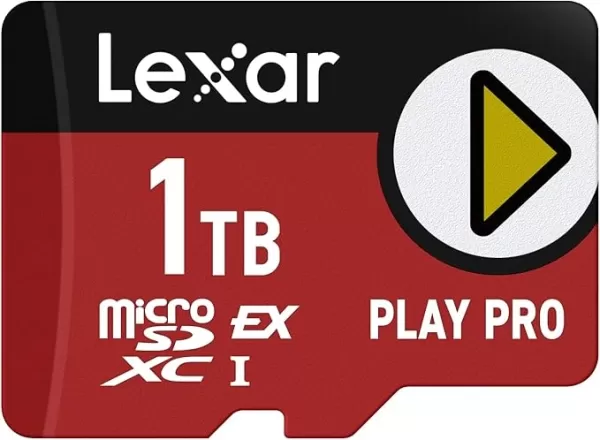Last week, Nintendo unveiled the Nintendo Switch 2, revealing that it exclusively supports expansion through MicroSD Express cards. This decision might be frustrating for those with existing MicroSD collections, but it's a strategic move due to the superior speed of MicroSD Express cards. These cards utilize a PCIe 3.1 interface, enabling read/write speeds comparable to the UFS (Universal Flash Storage) of the Switch 2's internal storage. This means games stored on these expansion cards can theoretically load as quickly as those stored internally, though it does mean you can't use the more affordable non-Express MicroSD cards.
MicroSD vs. MicroSD Express
Over the years, MicroSD cards have evolved through six different speed ratings. Starting with the initial SD cards at a modest 12.5MB/s, speeds have progressively increased, reaching up to 312MB/s with the SD UHS III standard. However, the introduction of the SD Express standard five years ago marked a significant leap in performance. The key difference with SD Express is its use of a PCIe 3.1 interface, which is also used by faster NVMe SSDs, allowing full-sized SD Express cards to achieve data transfer speeds up to 3,940MB/s. While MicroSD Express cards don't reach these peak speeds, they still offer impressive performance, with speeds up to 985MB/s, which is three times faster than the fastest non-Express MicroSD cards.
Why Does the Switch 2 Require MicroSD Express?
Although Nintendo hasn't explicitly detailed its reasoning, the requirement for MicroSD Express cards on the Switch 2 is likely driven by the need for speed. Games installed on a MicroSD Express card will load significantly faster than those on traditional UHS-I MicroSD cards, thanks to the PCIe 3.1 interface. This could set a precedent for future handheld gaming PCs as well.
The internal storage of the Nintendo Switch 2 has been upgraded to UFS from eMMC, aligning with the need for faster external storage. Early demos suggest that load times for games like Breath of the Wild have improved dramatically, with fast travel times reduced by 35% according to Polygon, and initial load times improved by a factor of three as reported by Digital Foundry. These improvements could be attributed to the faster internal storage, but also to enhanced CPU and GPU capabilities. The requirement for MicroSD Express ensures that external storage doesn't become a bottleneck for future games that demand faster disk speeds.
Moreover, this move future-proofs the console, as the current fastest SD card standard, SD 8.0 Specification, supports speeds up to 3,942MB/s for full-size SD Express cards. While MicroSD Express cards can't yet reach these speeds, they have the potential to do so in the future, provided the Switch 2's hardware can support it.
AnswerSee ResultsMicroSD Express Capacity Options
MicroSD Express cards have been slow to gain traction, but this is expected to change with the launch of the Nintendo Switch 2. Currently, options are limited. Lexar offers a single MicroSD Express card in 256GB, 512GB, and 1TB capacities, with the 1TB variant priced at $199.

Lexar Play Pro MicroSD Express
0See it at Amazon
SanDisk, on the other hand, offers a MicroSD Express card with a maximum capacity of 256GB, matching the internal storage of the Switch 2. As the Switch 2 hits the market, we might not see many MicroSD Express cards with capacities exceeding 512GB initially. However, as demand grows, companies like Samsung are likely to introduce higher-capacity options.

SanDisk MicroSD Express 256GB
0See it at Amazon















